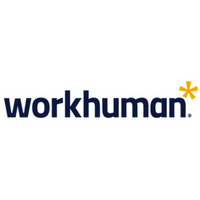Why human enterprise means pay must become agile

Yet for all the changes in work methods, the structure of compensation plans hasn’t changed. Economic stress is one reason: Data from the Society of Human Resource Management show a 34% reduction in merit pay increases since 2019 and Korn Ferry’s Global Salary Survey shows that only 35% of survey participants are making 100% of their workforce eligible for a raise this year.
What is agile pay?
Agile pay means anyone can give and receive micro-bonuses throughout the work year. Agile pay recognises individuals and interactions, not just rules or outcomes, and rewards people based on creating value in any way that benefits the customer or the organisation.
This is the year of the human workplace – celebrating human values and driving decision-making and accountability out from central management to teams. Individuals are showing amazing capacity to adapt and change. As people put more of themselves into their jobs, they expect pay to reflect their contributions as individuals.
An agile workforce deserves agile pay.
Making pay agile
Structuring a pay programme on individual bonuses alone can produce negative outcomes by eroding team spirit. When everyone’s competing for a piece of the same pie, they become reluctant to share information freely or boost their teammate’s productivity. Trust suffers. Growth, agility and teamwork decline.
In contrast, PayScale found that top performing organisations are more likely than others to offer a wide range of incentives, using compensation plans with as many as 10 components. Some are monetary (salary, bonuses) and some are non-monetary items like career development, paid time off, flexible schedules and recognition. An individual mix of components can be adjusted to suit individual employees.
In the human workplace, compensation can be fair and flexible. Agile pay isn’t determined only by who has the most refined resume or the most sought-after skill. It also includes a portion of pay that is rewarded by peers to peers, for many kinds of performance.
A social recognition system is the enabling technology of agile compensation. It designates a portion of total compensation budget (1% or more) to the people to give to each other. Several factors make social recognition the ideal tool for agile pay.
Recognition is more discerning than a bonus programme based solely on bottom-line results
How can key performance indicators like revenue targets be exacting enough to measure the contribution of the person who coaches a new team member, or the person whose creativity drives the team to go beyond the usual solution? Only the witnesses can do this.
Recognition is individual
Managers can’t witness everyone’s activity all the time. Co-workers know who came up with the innovative idea, who spent extra time on a project, who supported a team member stressed out by having to do their job while home-schooling a child during the pandemic.
In gratitude and recognition for these “above and beyond” actions, peers make a public accounting of those times accompanied by a micro-bonus (typically in a points-based programme).
Recognition is more immediate
Annual bonuses reward good work as much as a year downstream. A compensation deal made at the beginning of a year can’t possibly anticipate all the challenges and accomplishments of the year to come (2020 showed us just how extreme the difference between anticipation and reality can be). Managers are moving from the annual performance review to continuous feedback and coaching as the work year unfolds. Pay in the form of recognition moments is powerful, specific feedback.
Human pay for human beings
A peer-to-peer recognition rewards system is part of the human workplace because it conforms with human psychology. It creates ties of trust and gratitude amid the rush of work. It is noted in a company’s private social network so that people across the company get to know colleagues they might never otherwise have noticed. The peer award is accompanied by thanks and a story of what inspired it, which in a recognition system also creates a permanent record of how good work gets done.
Workhuman research has found that the positive psychological impact of an award lasts roughly two weeks whether it’s a year-end bonus of $2,000 or 20 awards of $100. The difference is that the second method boosts employee morale and engagement for 40 weeks through the year instead of two weeks in January.
I’m frequently asked if social recognition detaches pay from performance, making compensation a popularity contest. Experience and logic prove this concern is unfounded. People respond to greater agility with greater accountability. As Michael Schrage of MIT’s Sloan School noted: “The more empowered employees are, the more accountable they become.”
Leaders create more agile organisations by showing direction and enabling action. Compensation is a foundation of the employer-employee relationship. By dedicating a penny of each payroll dollar to social recognition, employers can make compensation more agile, more democratic and ultimately more human.
The author is Eric Mosley, CEO at Workhuman.
This article is provided by Workhuman.
(This post originally appeared in Forbes).
Supplied by REBA Associate Member, Workhuman
Workhuman is a provider of social recognition and continuous performance management software.







